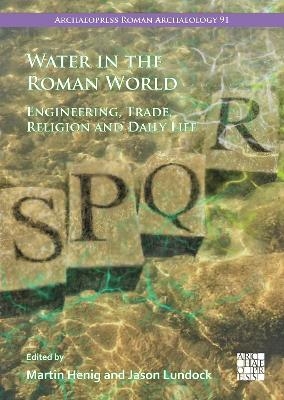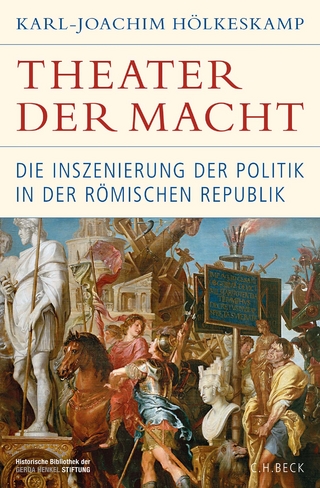
Water in the Roman World
Archaeopress Archaeology (Verlag)
978-1-80327-300-6 (ISBN)
Water in the Roman World: Engineering, Trade, Religion and Daily Life offers a wide and expansive new treatment of the role water played in the lives of people across the Roman world. Individual papers deal with ports and their lighthouses; with water engineering, whether for canals in the north-west provinces, or for the digging of wells for drinking water, and for multiple other purposes; with baths for swimming; and with spas. Further papers explore religion in water-sanctuaries and the deposition of objects in rivers as well as deities connected with water, including river gods and nymphs. A final chapter provides an overview of subjects not fully covered elsewhere, including warships and naval battles, trade and navigation, aqueducts, fishing and fish-farming, and literary response to watery landscapes, rivers and lakes. The latter include works by great landowners such as the younger Pliny with his Laurentine villa beside the sea west of Rome or by poets, among them Catullus enjoying Lake Garda and Ausonius with his loving description of the River Moselle. The contributors address the subject in a variety of different ways, as Classicists drawing largely on literature, archaeologists with experience of excavating the watery environment, and art-historians. The papers range from the theoretical, with particular interest in materiality, to more lyrical approaches which address the Romans with their problems as well as their pleasures.
Martin Henig lectured on Roman Art in the University of Oxford for many years, where he was latterly a Supernumerary Fellow of Wolfson College. He is the author of many books and articles on Roman gems and on the art and culture of Roman Britain. Martin serves as an Anglican priest in the Diocese of Oxford. Jason Lundock completed his undergraduate degree at Harvard University before earning his Master’s and PhD. from King’s College London in Classical Archaeology. His specialisations include small finds, numismatics, Roman/Late Antique Britain and archaeological theory. He currently teaches mythology at Full Sail University in Winter Park, Florida. He is the author of several articles and the monograph A Study of the Deposition and Distribution of Copper Alloy Vessels in Roman Britain.
Preface ;
Water and Why Materiality Matters in Roman Studies – Jason Lundock ;
Iconography of the Lighthouse in Roman Antiquity: Symbolism, Identity and Power Across the Mediterranean – Federico Ugolini ;
Roman Offensive Planning: Shaping the Lower Rhine Waterscape – Stijn Heeren and Mark Driessen ;
‘Springs Sumptuously Equipped’: Meanings of Water at Bath – Eleri Cousins ;
If Swimming Was Not a Serious Activity for the Greeks and Romans, They Would Not Have Had Swimming Pools – Jenny Amphaeris and Martin Henig ;
The Social Lives of Wells in Roman Britain and Beyond – James Gerrard ;
Aspects of the Iconography of River Gods in Roman Britain – Penny Coombe ;
What Lies Beneath? Interpreting the Romano-British Assemblage from the River Tees at Piercebridge, County Durham – Philippa Walton and Hella Eckardt ;
Water and Liminality in Pre-Roman Gaul – Aaron Irvin ;
Worship of the Nymphs at Aquae Iasae (Roman Pannonia Superior): Cognition, Ritual, and Sacred Space – Blanka Misic ;
An Empire Written on Water: A Personal View – Martin Henig ;
Author Biographies
| Erscheinungsdatum | 30.08.2022 |
|---|---|
| Reihe/Serie | Archaeopress Roman Archaeology |
| Zusatzinfo | 37 figures (colour throughout) |
| Verlagsort | Oxford |
| Sprache | englisch |
| Maße | 174 x 245 mm |
| Gewicht | 554 g |
| Themenwelt | Sachbuch/Ratgeber ► Geschichte / Politik ► Vor- und Frühgeschichte / Antike |
| Geisteswissenschaften ► Archäologie | |
| Geschichte ► Allgemeine Geschichte ► Altertum / Antike | |
| ISBN-10 | 1-80327-300-3 / 1803273003 |
| ISBN-13 | 978-1-80327-300-6 / 9781803273006 |
| Zustand | Neuware |
| Haben Sie eine Frage zum Produkt? |
aus dem Bereich


